AI Composting: How It Works
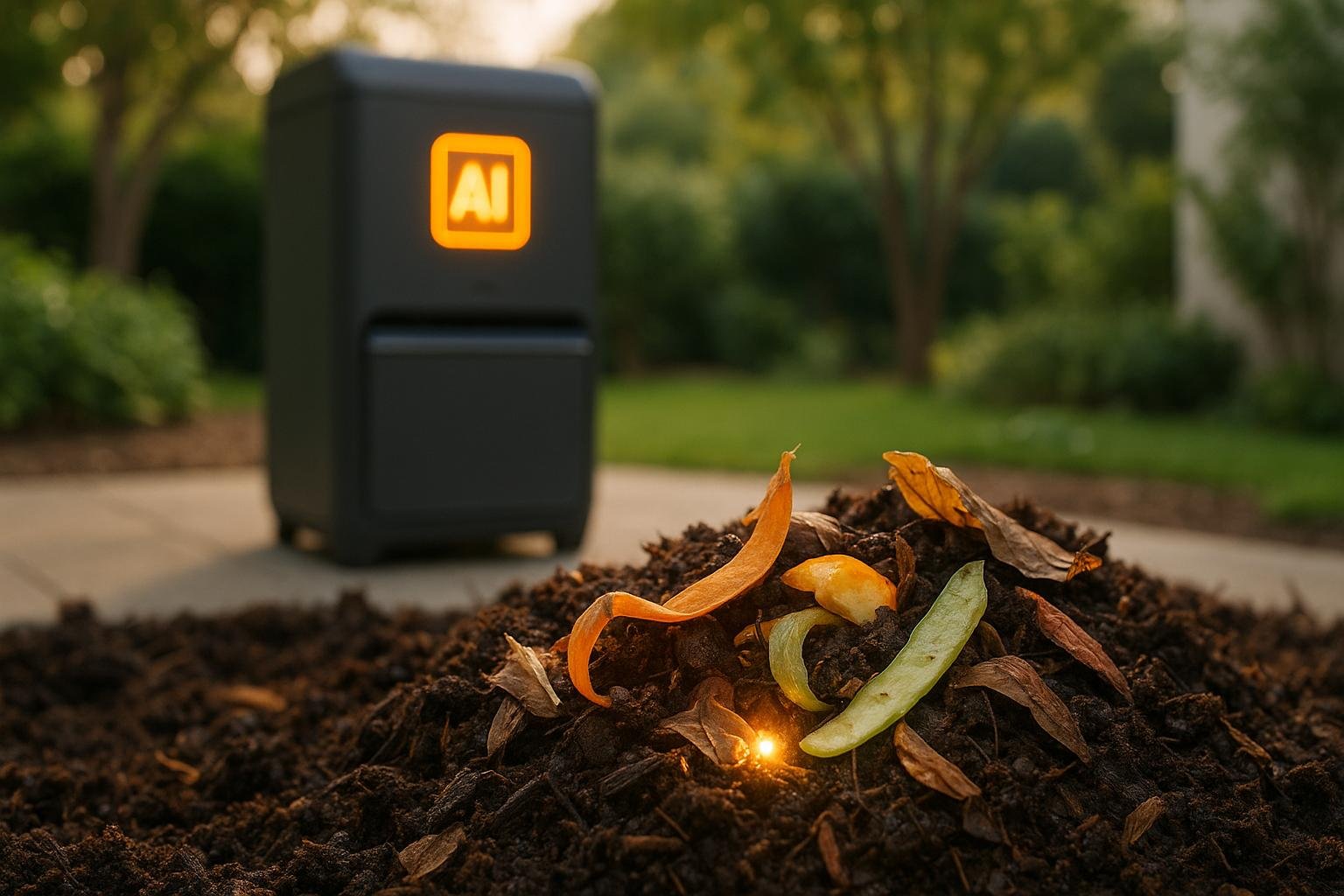
AI composting transforms organic waste into nutrient-rich compost by using data and automation to optimize the process. Unlike manual methods, it relies on IoT sensors, machine learning, and real-time adjustments to maintain ideal conditions, reduce emissions, and improve compost quality. Here’s how it works:
- Sensors: Monitor temperature, moisture, oxygen, and gas emissions to track decomposition.
- AI Analysis: Processes data to predict outcomes and identify adjustments needed.
- Automation: Dynamically controls factors like aeration and moisture for consistent results.
This approach reduces waste, cuts ammonia emissions by 30%, and creates high-quality compost tailored to soil needs. While it offers efficiency and precision, challenges include high costs, reliance on electricity, and maintenance demands. AI composting is best suited for large-scale operations or dedicated gardeners looking to improve their composting process.
ecop: The Quietest Fully Automatic Food Waste Composter
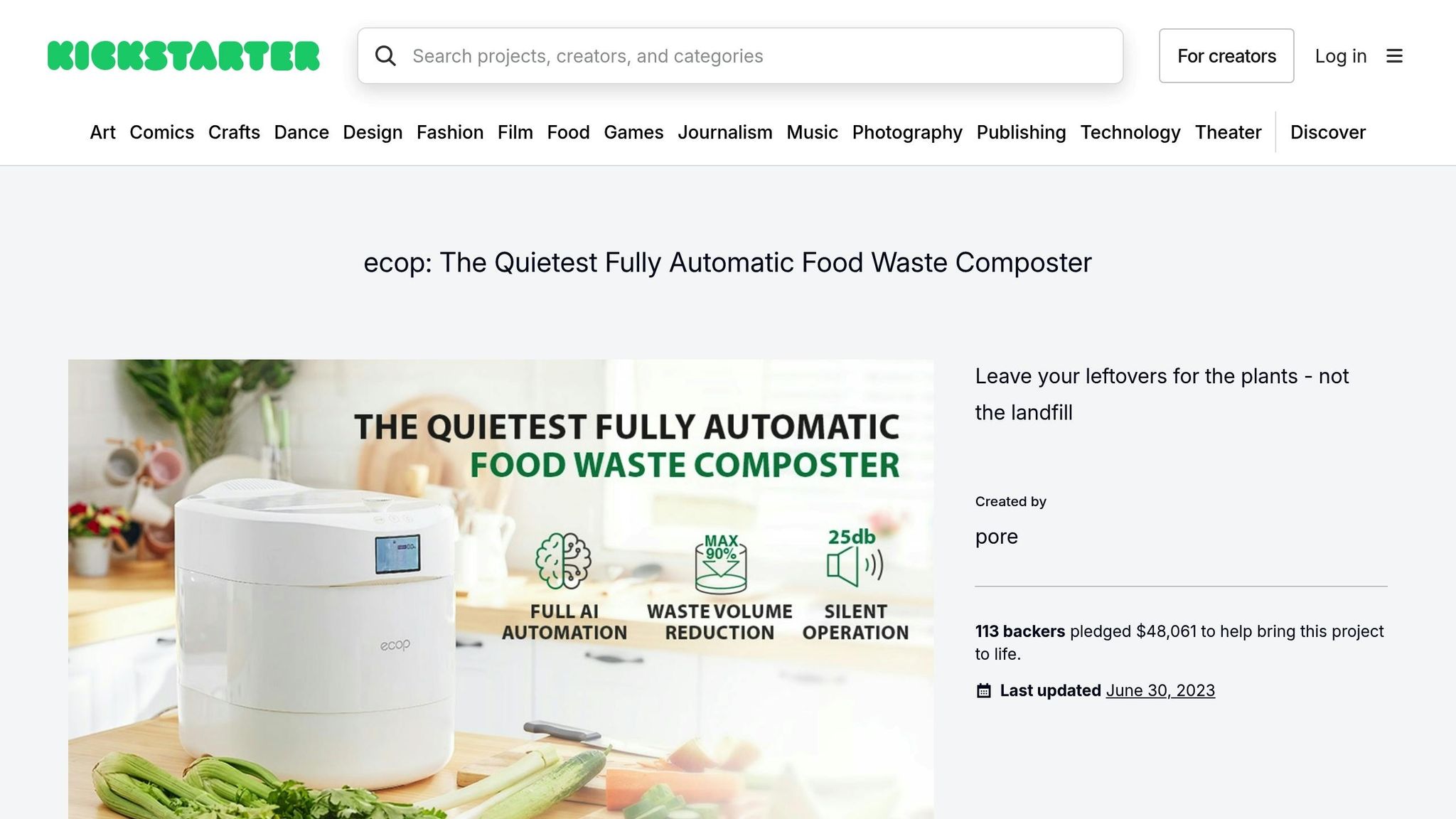

Key Parts of AI Composting Systems
AI composting systems are built around three main components that work in tandem to create the ideal environment for decomposition. By combining advanced technology and data-driven processes, these systems elevate traditional composting into a precise and efficient operation. Each element plays a critical role, starting with data collection and culminating in automated real-time adjustments.
Sensors and Data Collection
At the heart of AI composting systems is a network of IoT sensors designed to monitor key parameters like temperature, moisture levels, oxygen concentration, and gas emissions. These sensors continuously gather data, providing a detailed picture of the composting process.
Temperature sensors are particularly important, as maintaining the right heat levels is essential for successful composting. For instance, compost piles often reach temperatures of around 131°F (55°C) within days or weeks. Sustaining temperatures above this threshold during multiple turnings ensures the destruction of pathogens and unwanted seeds [6]. Wireless probes and smart sensors further enhance the process by offering real-time data and reducing delays in transmission [5][6].
Gas sensors add another layer of precision by tracking emissions such as methane (CH4), carbon dioxide (CO2), and ammonia (NH3). This helps operators monitor the biochemical activity within the compost pile and quickly address potential problems [7]. All this sensor data feeds into machine learning systems, forming the foundation for optimizing every stage of composting.
AI Data Analysis
Once the sensors gather raw data, machine learning algorithms step in to process it. These algorithms excel at handling complex datasets, predicting outcomes, and improving both efficiency and resource management [8]. Their ability to identify nonlinear relationships and fill in data gaps makes them particularly valuable for addressing the challenges of modeling biowaste composting [9].
For example, models such as Decision Tree, Linear Regression, and K-Neighbors, when enhanced with methods like Genetic Algorithms and Particle Swarm Optimization, have shown improved accuracy in predicting composting outcomes [8][9]. Another study highlighted how a Bayesian Regularized Neural Network model effectively predicted emissions during the early stages of composting [10]. These insights allow operators to make informed decisions that enhance the overall process.
Automation and Process Control
The final piece of the puzzle is automation, where systems use AI-driven insights to adjust composting variables in real time. Factors like aeration, moisture levels, and feedstock composition are dynamically controlled to maintain optimal conditions [8].
For instance, FCC Medio Ambiente has implemented AI technology in composting plants to monitor and regulate parameters such as temperature, humidity, and aeration, reducing the need for constant human oversight [4]. Robotics also play a transformative role in waste sorting. In San Antonio, Texas, robotic sorters have achieved impressive results, with no truckloads of organic waste rejected due to contamination - a significant improvement over earlier systems [3]. Additionally, advanced imaging technologies like hyperspectral imaging (HSI) combined with machine learning have achieved a remarkable 99% accuracy rate in identifying compostable materials, as demonstrated by a UK research team [3].
AI's ability to analyze and predict high-dimensional data from composting operations ensures precise control and synchronization, leading to improved performance and efficiency across the board [10].
How AI Composting Works: Step-by-Step Process
AI composting has revolutionized how gardeners turn organic waste into nutrient-packed compost. By breaking the process into three key phases, it’s easier to see how technology simplifies and automates composting, making it efficient and user-friendly.
Setting Up the System
Getting your AI composting system up and running starts with proper hardware and software setup. Take the Compai Smart Home Compost system as an example - it’s designed to be easy for home gardeners to use.
First, download the Compai app and TestFlight on your iOS device. After creating an account in the app, you’ll need to input your DeviceID, which is printed on the sensor device itself. From here, the system connects to your home Wi-Fi network. A strong, reliable connection is critical since the device depends on constant data transmission.
Placement is key. Ensure the device gets a few hours of direct sunlight daily to power its solar components. For compost bins, position the sensors centrally to monitor microbial activity. If you’re using a compost tumbler, place sensors at the bottom and mount the device box at the top, ensuring it faces the sun for efficient charging.
Advanced systems, especially commercial-grade ones, take automation to the next level. Features like AI-Weight Detection, AI-Bucket Detection, and Empty Bucket Detection allow these systems to measure waste weight, track temperature and humidity, and manage the composting process with minimal intervention.
"AI handles food processing without inefficient operation or inconvenience caused by microbial management." – THINKWARE US [11]
Real-Time Monitoring and Adjustments
Once your system is set up, it takes over with real-time control and monitoring. AI composting systems continuously collect data on critical factors like temperature, moisture, oxygen levels, and gas emissions. Using machine learning, the system analyzes this data and makes adjustments to maintain ideal composting conditions.
For instance, the system might tweak aeration rates, control watering, or adjust the turning schedule - all automatically. This precision is no small feat. GreenTech Solutions, for example, tested AI-controlled composting and saw a 30% reduction in ammonia (NH₃) emissions compared to traditional methods, thanks to better moisture and oxygen level management [1].
By replacing guesswork with data-driven decisions, the system ensures your composting process stays on track. Once conditions are perfect and the compost is ready, the system moves into the final phase.
Harvesting and Using Compost
AI takes the uncertainty out of knowing when your compost is ready. Using sensor data, it predicts the best time to harvest and even provides recommendations for how to use the finished product.
Smart algorithms monitor factors like temperature stabilization, gas emissions, and moisture to determine when decomposition is complete. When the compost reaches maturity, the system alerts you and checks its quality. Sensors analyze nutrient levels and pH, ensuring the compost is ready for garden use.
Some systems go a step further, integrating with garden management platforms. These platforms can suggest how to apply the compost based on your soil’s condition, what you’re planting, and the time of year.
The result? Compost that’s more consistent and nutrient-rich than what you’d get from traditional methods. This precision leads to healthier soil and better results in your garden beds. AI composting doesn’t just simplify the process - it elevates it.
sbb-itb-4d6a8dd
🚀 Ready to Reinvent Your Garden?
Join thousands of homeowners who have transformed their gardens using our AI design tool. Upload one photo to explore endless possibilities.
Get your AI garden designs →Pros and Cons of AI Composting
AI composting, like any technology, comes with its set of benefits and challenges. Weighing these can help you determine whether it's a good match for your gardening needs and budget.
Benefits of AI Composting
One of the standout advantages of AI composting is its ability to cut ammonia (NH₃) emissions by 30%. By precisely controlling moisture and oxygen levels, systems like those developed by GreenTech Solutions significantly outperform traditional composting methods[1].
AI also brings precision and consistency to the table. For example, a UK research team created a sensor-based system using hyperspectral imaging and machine learning. This system achieved an impressive 99% accuracy in sorting compostable materials by type and specific composting needs[3]. Such accuracy ensures more uniform and higher-quality compost.
Another major perk is reduced labor. In San Antonio, Texas, robotic sorting powered by machine vision has been used to eliminate contaminants from organic waste. Thanks to this system, the city hasn’t had to reject a single truckload of organic waste, cutting down on the need for manual quality checks[3].
AI also speeds up the composting process. By continuously monitoring conditions like temperature, moisture, and oxygen levels, these systems make real-time adjustments to keep decomposition running smoothly[1].
While these benefits highlight the potential of AI composting to improve efficiency and sustainability, the technology does come with its own challenges.
Drawbacks and Considerations
Cost is a significant hurdle. AI composting systems require a hefty upfront investment in equipment, software, and installation. While these systems may reduce labor costs over time, the initial expense can be a barrier for many[12].
Technical complexity is another issue. Maintaining these systems often requires specialized expertise. For instance, Atlas Organics faced challenges with AI robots that couldn’t handle outdoor conditions, leading to 29.3% downtime[13].
Human oversight is still essential. Atlas Organics found that human workers were better at removing contaminants, meaning manual intervention remains necessary despite AI advancements[13].
There are also environmental concerns tied to the technology itself. Training large AI models generates around 626,000 pounds of CO₂ - comparable to 300 round-trip flights between New York and San Francisco[14]. On top of that, the Information and Communications Technology sector's emissions could account for 14% of global emissions by 2040. E-waste is another growing issue, with projections from the World Economic Forum indicating it will exceed 120 million metric tons by 2050[14].
Comparison Table: Pros and Cons
| Aspect | Benefits | Drawbacks |
|---|---|---|
| Environmental Impact | Cuts emissions and optimizes resource use | Higher energy use and growing e-waste concerns |
| Accuracy | 99% sorting accuracy for consistent compost | Sensors may miss some contaminants |
| Labor Requirements | Reduces manual monitoring and quality control | Needs specialized maintenance skills |
| Cost | Potential long-term savings via automation | High initial investment for setup |
| Reliability | 24/7 monitoring ensures optimal conditions | Downtime can reach 29.3% in tough environments |
Deciding whether to adopt AI composting ultimately depends on your individual goals, resources, and priorities. While the technology offers notable environmental and operational advantages, its costs and technical demands make it better suited for commercial use or dedicated gardeners.
Best Practices for AI Composting in the US
Successfully implementing AI composting systems in the US requires careful planning tailored to local conditions and consistent upkeep. With only 27% of Americans having access to composting programs[3], using the right strategies can greatly improve your garden’s efficiency and reduce waste.
Choosing the Right Tools
When selecting an AI composting system, look for features that can monitor and adjust temperature and moisture levels automatically to support healthy microbial activity[3]. The best systems can even predict when your compost will be ready, thanks to advanced machine learning algorithms like neural networks and support vector machines. These tools are excellent at handling the complex relationships between variables in the composting process[2].
Accuracy is key. Systems with sensors capable of achieving up to 99% sorting accuracy, as demonstrated by UK research using hyperspectral imaging and machine learning, are ideal[3]. Additionally, consider systems that integrate with existing tools like AIGardenPlanner, which can help you design your garden and choose plants suited to your local climate. These systems can work together seamlessly to ensure your compost benefits the plants that need it most.
It’s also smart to select systems that can optimize compost formulations using materials readily available in your area[2]. This minimizes transportation costs and ensures the compost provides the nutrients your plants require.
Once you’ve chosen the right tools, it’s time to focus on how local conditions in the US might influence their performance.
Addressing Local Factors
The US poses unique challenges for AI composting due to its varied climate zones and differing regulations. For example, the system you choose should be able to adapt to local weather patterns, using environmental data like weather forecasts to adjust aeration and temperature controls as needed[16].
To make daily monitoring easier, ensure your system displays data in familiar US formats - temperatures in Fahrenheit, distances in feet and inches, and weights in pounds. This avoids unnecessary confusion and simplifies maintenance.
Achieving the ideal carbon-to-nitrogen ratio of 30:1[15] can vary depending on your region’s available materials. In the Northeast, for instance, fall leaves (high in carbon) are plentiful, while in the South, nitrogen-rich grass clippings are more common. AI systems should recognize these local differences and adjust their recommendations accordingly.
Regulations also differ by state and municipality. Some areas require compost to reach certain temperatures to kill pathogens, while others prioritize odor control. Before installation, research your local requirements to ensure compliance.
Energy costs are another factor to consider. AI composting systems rely on electricity to power sensors, automated mechanisms, and climate controls. If you live in a region with high energy prices, look for energy-efficient models or systems that can incorporate solar power.
Maintenance and Scaling
Once your system is set up and adjusted for local conditions, proper maintenance and thoughtful scaling are essential for long-term success. Start by scheduling regular sensor calibration and cleaning to prevent organic buildup that could interfere with performance[17]. Keeping sensors in good shape ensures accurate data collection and reduces the risk of breakdowns.
Make sure your system stays up to date. Many manufacturers release software updates that improve prediction accuracy and add new features. Enabling automatic updates ensures your system adapts to changing conditions and maintains peak performance[17].
For outdoor systems, invest in weather protection. US weather can be unpredictable, from hurricanes in the Southeast to freezing winters in the Midwest. Protect electronic components with weatherproof housing and ensure proper drainage to prevent water damage.
If you’re planning to expand, start small and scale up gradually. Analytics-driven approaches have shown a 25% reduction in material loss and a 40% improvement in energy efficiency[17]. Begin with a single unit to get familiar with the technology before adding more. Mobile apps can help you track inputs and outputs as you scale, making it easier to monitor multiple composting sites and test different feedstock combinations[17].
Finally, be prepared for wear and tear. Keep spare sensors and critical components on hand, especially in regions with extreme weather. Having replacements ready minimizes downtime during busy composting seasons and keeps your system running smoothly.
Conclusion: The Future of AI in Garden Management
AI is reshaping the way we approach sustainable gardening, replacing traditional trial-and-error methods with smarter, data-driven strategies. With global waste expected to hit 3.4 billion tons annually by 2050[3], these systems offer a practical way to tackle environmental challenges while boosting garden productivity.
The technology has already shown its value in real-world scenarios, addressing waste sorting issues and reducing contamination. But its potential goes beyond waste management. AI is now being used to create tailored solutions for garden care, including optimizing compost formulations based on locally available materials. This not only cuts transportation costs but also supports circular economy practices[2].
For example, tools like AIGardenPlanner take this a step further by offering a fully integrated approach. The platform combines AI-driven garden design with personalized plant recommendations, tailored to specific climates and locations. It even helps gardeners visualize how targeted compost production can benefit plant arrangements and overall garden health. By doing so, it reduces the need for synthetic fertilizers and ensures nutrients are used more efficiently[2].
Decentralized waste management is also gaining traction, with small-scale organic waste converters becoming more common in homes and communities[18]. As these composting machines evolve into smart, connected devices[18], they pave the way for a seamless integration of precise composting with intelligent garden planning. Choosing AI composting systems that work hand-in-hand with advanced garden design tools can align waste management with your garden's broader goals, setting the stage for smarter, more sustainable gardening practices.
FAQs
How does AI composting compare to traditional methods in terms of efficiency and environmental benefits?
AI-powered composting has gained attention for its precision and eco-friendly benefits. Leveraging advanced data analysis and automation, these systems carefully regulate key factors like temperature, moisture levels, and airflow. This level of control not only speeds up the composting process but also minimizes harmful greenhouse gas emissions, such as methane.
On the other hand, traditional composting depends on natural decomposition, which is harder to manage and often results in higher emissions. While both methods contribute to reducing organic waste, AI composting takes it a step further by offering a more efficient and controlled solution.
What challenges and costs should I consider when setting up and maintaining an AI-powered composting system?
Setting up an AI-powered composting system isn't without its hurdles, and it’s important to weigh both the challenges and costs involved. Upfront expenses can be steep, as you'll need advanced equipment and cutting-edge technology to get started. On top of that, you'll require trained personnel to operate and maintain the system, which could mean investing in additional training programs. Other potential obstacles include safeguarding data privacy, mitigating contamination risks, managing odors, and maintaining consistent compost quality.
Once the system is running, there are ongoing costs to consider, such as regular equipment maintenance, software updates, and day-to-day operational expenses. While these systems can deliver long-term benefits, careful planning is key to ensuring they operate efficiently and meet sustainability goals.
How do AI composting systems adapt to different climates and regulations in the US?
AI composting systems leverage local climate data to fine-tune essential factors such as temperature, moisture, and microbial activity, creating the ideal conditions for composting in different regions. This means they can adapt to seasonal changes or even extreme weather, ensuring the process remains efficient throughout the year.
In addition to climate adaptability, these systems are programmed to align with local waste management laws and emissions standards. By incorporating regional regulations, they not only help maintain compliance but also encourage environmentally friendly practices across various parts of the United States.
🎨 Visualize Your Dream Garden Today!
Transform any outdoor space into a professional landscape design in minutes. Just upload a photo, choose your style, and let our AI do the rest.
Start your garden transformation now →Related posts
Related Articles
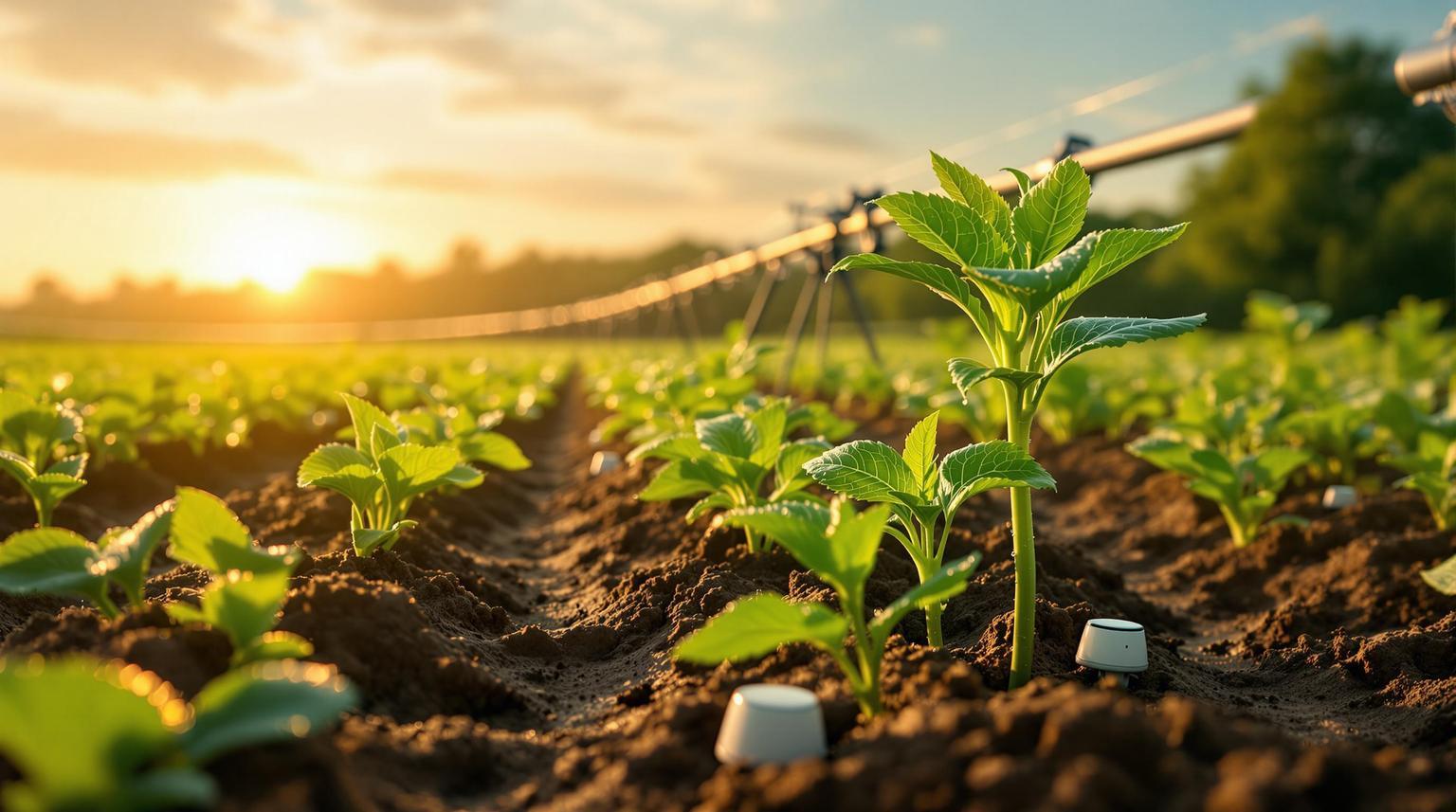
How AI Improves Soil Moisture Data Analysis
Explore how AI enhances soil moisture analysis, optimizes irrigation, and promotes healthier plants while conserving water in agriculture.

How AI Soil Sensors Monitor Moisture and Nutrients
Explore how AI soil sensors enhance farming efficiency by monitoring moisture and nutrients, optimizing irrigation, and boosting crop yields.
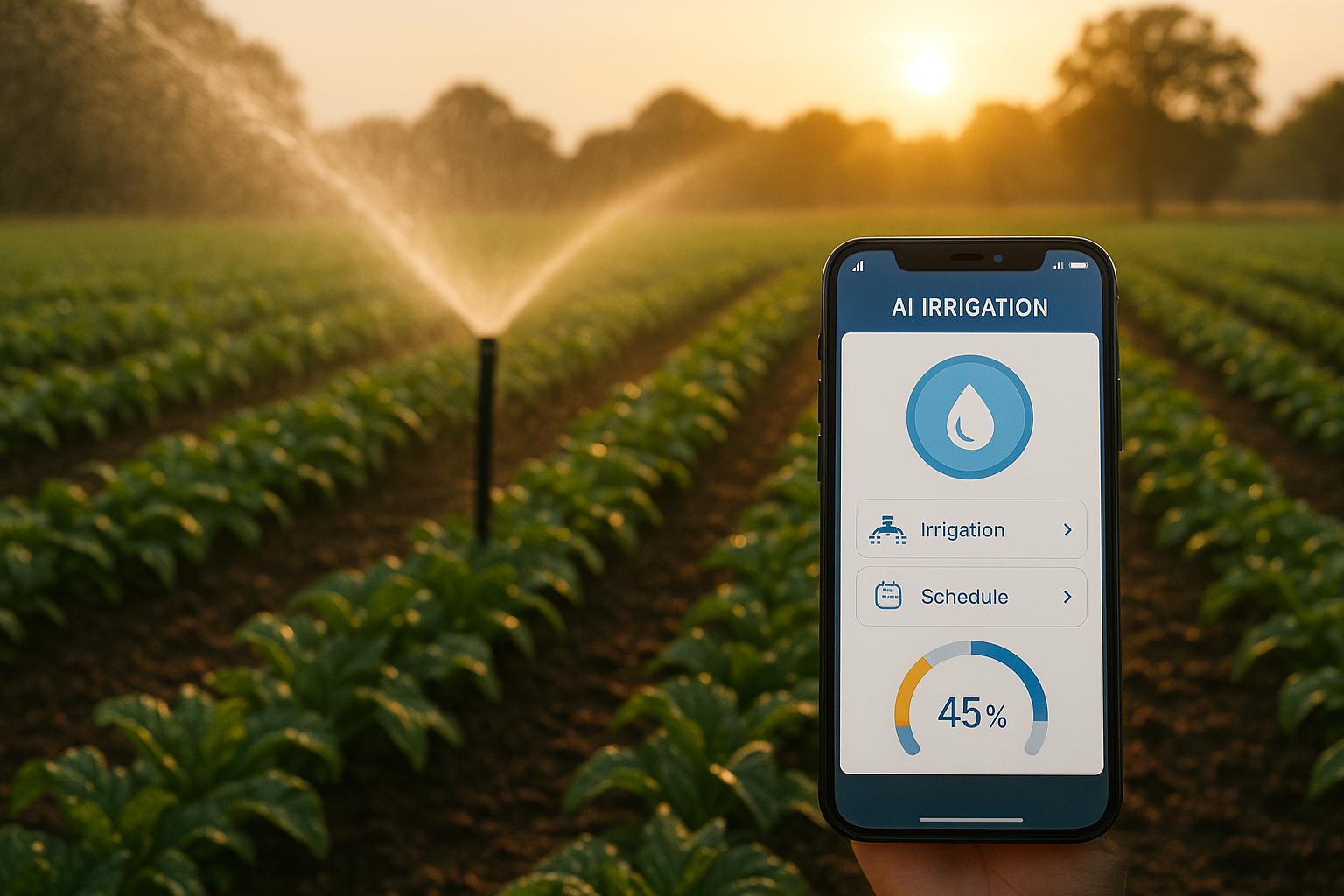
AI-Powered Irrigation Apps: How They Work
AI-powered irrigation apps optimize water use, enhance plant health, and reduce costs, transforming how we manage gardens and farms.

Benefits and Considerations of Using Boiled Linseed Oil for Raised Beds
Discover the benefits of using boiled linseed oil for raised beds, including improved longevity and natural protection against pests. Learn application tips and considerations for this eco-friendly wood treatment option.
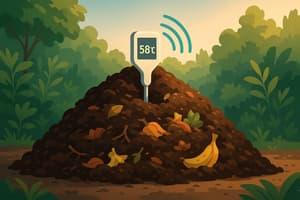
How AI Monitors Compost Temperature
AI streamlines composting by automating temperature monitoring, enhancing decomposition, and reducing manual effort for better compost quality.
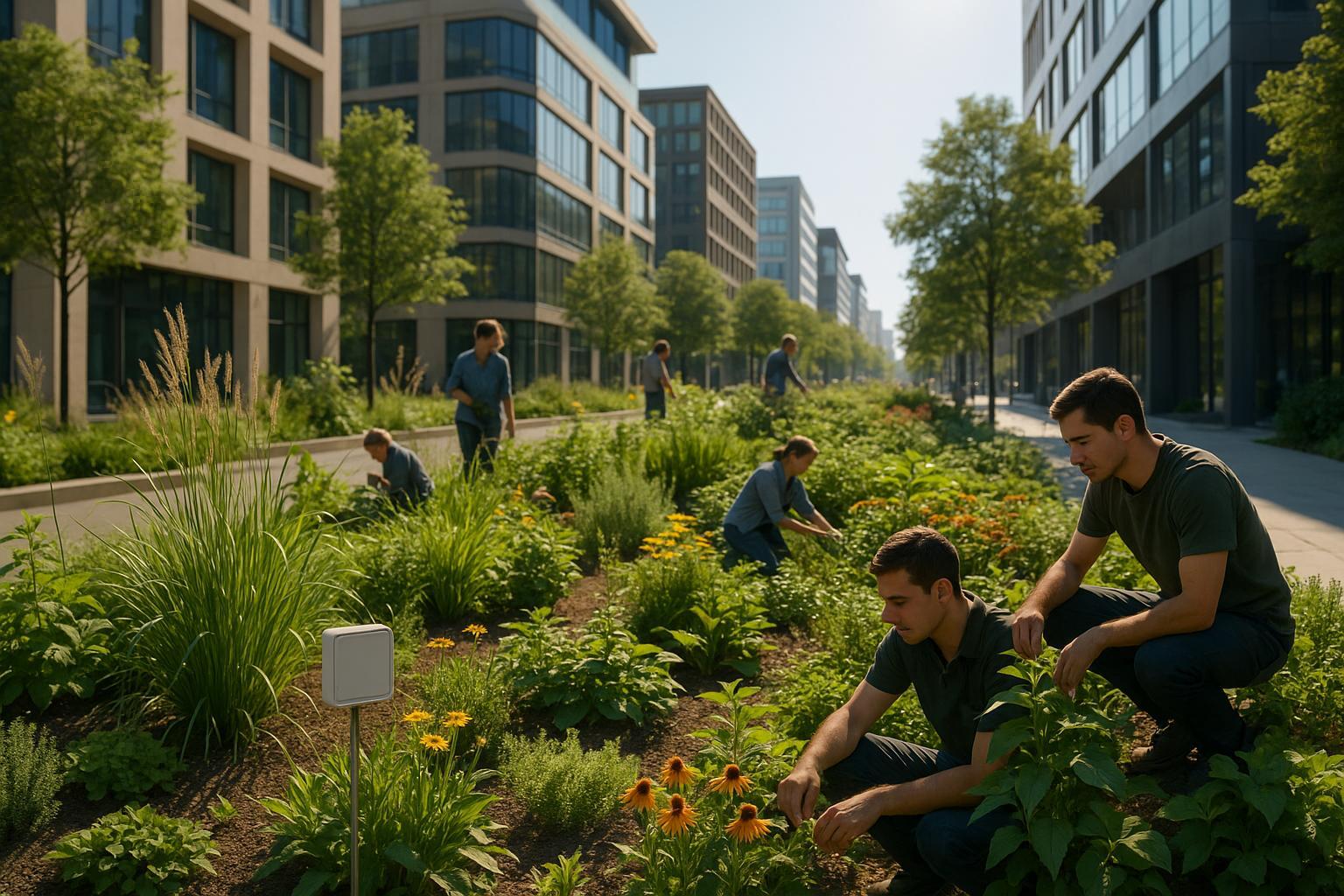
AI Climate Analysis for Urban Planting Success
AI is revolutionizing urban planting with precise climate analysis, optimizing resources, and enhancing sustainability while addressing traditional method limitations.